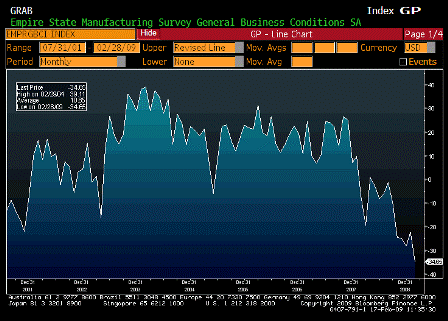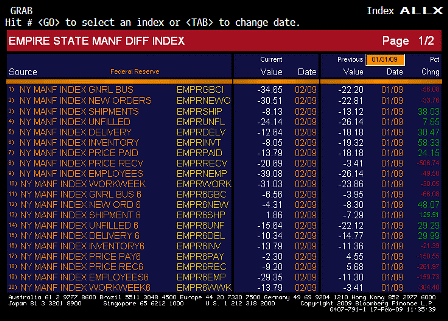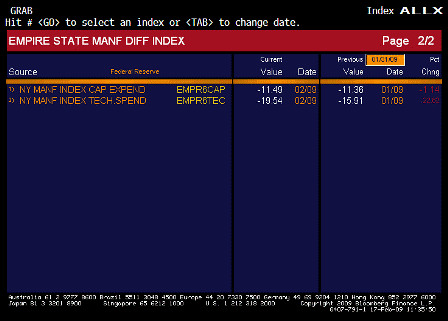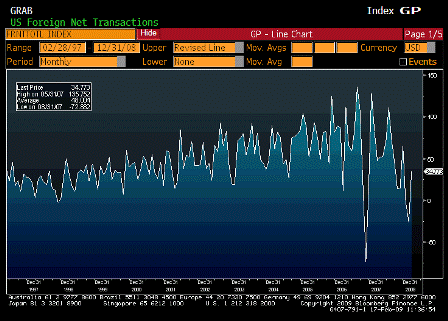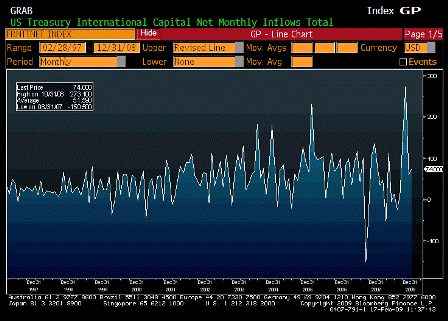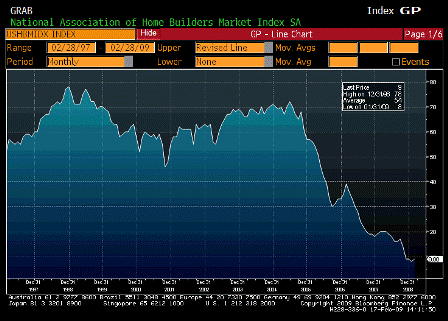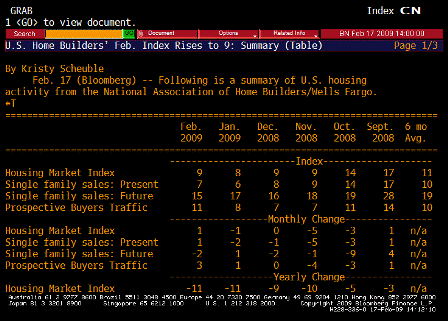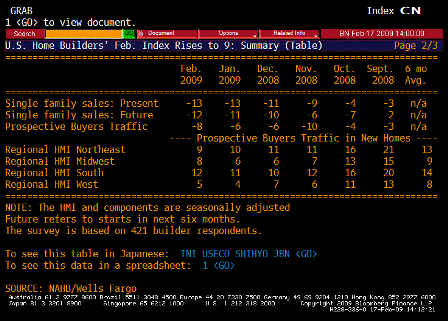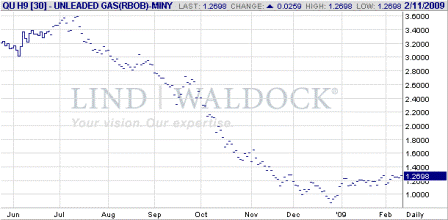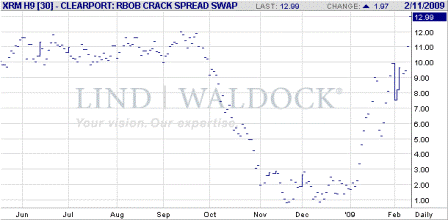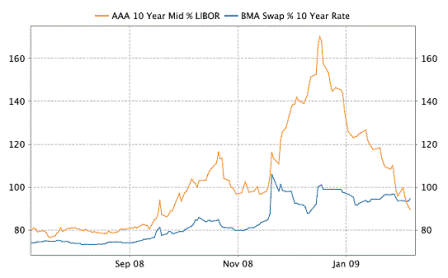(email exchange)
Cliff,
Martin Wolf is spot on below. Our biggest risk is the reluctance of our leaders to implement the fiscal adjustments on an as needed, size no object, basis to reverse shortfalls in aggregate demand.
>
> On Fri, Feb 20, 2009 at 11:11 AM, Cliff wrote:
>
> Warren,
>
> Many people ask me why Japan did not have large
> inflation with their large deficits,
>
They weren’t even large enough to fully offset the deflationary forces.
>
> and they ask will the U.S. be like Japan or will
> inflation recur in the next few years.
>
Depends on crude prices. If they go up inflation as we know it comes back. This is very likely.
We need a hard policy to cut our imported fuel consumption to prevent ‘inflation’ and declining real terms of trade.
>
> Please see the article below, and can you
> comment on the article and the related two
> questions posed above.
>
> Thanks, Cliff
>
Japan’s lessons for a world of balance-sheet deflation
by Martin Wolf
Feb 17 (Financial Times) — What has Japan’s “lost decade” to teach us? Even a year ago, this seemed an absurd question. The general consensus of informed opinion was that the U.S., the U.K. and other heavily indebted western economies could not suffer as Japan had done. Now the question is changing to whether these countries will manage as well as Japan did. Welcome to the world of balance-sheet deflation.
As I have noted before , the best analysis of what happened to Japan is by Richard Koo of the Nomura Research Institute.* His big point, though simple, is ignored by conventional economics: balance sheets matter. Threatened with bankruptcy, the overborrowed will struggle to pay down their debts. A collapse in asset prices purchased through debt will have a far more devastating impact than the same collapse accompanied by little debt.
Most of the decline in Japanese private spending and borrowing in the 1990s was, argues Mr Koo, due not to the state of the banks, but to that of their borrowers. This was a situation in which, in the words of John Maynard Keynes, low interest rates – and Japan’s were, for years, as low as could be – were “pushing on a string”. Debtors kept paying down their loans.
How far, then, does this viewpoint inform us of the plight we are now in? A great deal, is the answer.
First, comparisons between today and the deep recessions of the early 1980s are utterly misguided. In 1981, U.S. private debt was 123 per cent of gross domestic product; by the third quarter of 2008, it was 290 per cent. In 1981, household debt was 48 per cent of GDP; in 2007, it was 100 per cent. In 1980, the Federal Reserve’s intervention rate reached 19-20 per cent. Today, it is nearly zero.
When interest rates fell in the early 1980s, borrowing jumped. The chances of igniting a surge in borrowing now are close to zero. A recession caused by the central bank’s determination to squeeze out inflation is quite different from one caused by excessive debt and collapsing net worth. In the former case, the central bank causes the recession. In the latter, it is trying hard to prevent it.
Second, those who argue that the Japanese government’s fiscal expansion failed are, again, mistaken. When the private sector tries to repay debt over many years, a country has three options: let the government do the borrowing; expand net exports; or let the economy collapse in a downward spiral of mass bankruptcy.
Despite a loss in wealth of three times GDP and a shift of 20 per cent of GDP in the financial balance of the corporate sector, from deficits into surpluses, Japan did not suffer a depression. This was a triumph. The explanation was the big fiscal deficits. When, in 1997, the Hashimoto government tried to reduce the fiscal deficits, the economy collapsed and actual fiscal deficits rose.
Third, recognising losses and recapitalising the financial system are vital, even if, as Mr Koo argues, the unwillingness to borrow was even more important. The Japanese lived with zombie banks for nearly a decade. The explanation was a political stand-off: public hostility to bankers rendered it impossible to inject government money on a large scale, and the power of bankers made it impossible to nationalise insolvent institutions. For years, people pretended that the problem was downward overshooting of asset price. In the end, a financial implosion forced the Japanese government’s hand. The same was true in the U.S. last autumn, but the opportunity for a full restructuring and recapitalisation of the system was lost.
In the U.S., the state of the financial sector may well be far more important than it was in Japan. The big US debt accumulations were not by non-financial corporations but by households and the financial sector. The gross debt of the financial sector rose from 22 per cent of GDP in 1981 to 117 per cent in the third quarter of 2008, while the debt of non-financial corporations rose only from 53 per cent to 76 per cent of GDP. Thus, the desire of financial institutions to shrink balance sheets may be an even bigger cause of recession in the US.
How far, then, is Japan’s overall experience relevant to today?
The good news is that the asset price bubbles themselves were far smaller in the US than in Japan. Furthermore, the U.S. central bank has been swifter in recognising reality, cutting interest rates quickly to close to zero and moving towards “unconventional” monetary policy.
The bad news is that the debate over fiscal policy in the U.S. seems even more neanderthal than in Japan: it cannot be stressed too strongly that in a balance-sheet deflation, with zero official interest rates, fiscal policy is all we have. The big danger is that an attempt will be made to close the fiscal deficit prematurely, with dire results. Again, the U.S. administration’s proposals for a public/private partnership, to purchase toxic assets, look hopeless. Even if it can be made to work operationally, the prices are likely to be too low to encourage banks to sell or to represent a big taxpayer subsidy to buyers, sellers, or both. Far more important, it is unlikely that modestly raising prices of a range of bad assets will recapitalise damaged institutions. In the end, reality will come out. But that may follow a lengthy pretence.
Yet what is happening inside the US is far from the worst news. That is the global reach of the crisis. Japan was able to rely on exports to a buoyant world economy. This crisis is global: the bubbles and associated spending booms spread across much of the western world, as did the financial mania and purchases of bad assets. Economies directly affected account for close to half of the world economy. Economies indirectly affected, via falling external demand and collapsing finance, account for the rest. The US, it is clear, remains the core of the world economy.
As a result, we confront a balance-sheet deflation that, albeit far shallower than that in Japan in the 1990s, has a far wider reach. It is, for this reason, fanciful to imagine a swift and strong return to global growth. Where is the demand to come from? From over-indebted western consumers? Hardly. From emerging country consumers? Unlikely. From fiscal expansion? Up to a point. But this still looks too weak and too unbalanced, with much coming from the US. China is helping, but the eurozone and Japan seem paralysed, while most emerging economies cannot now risk aggressive action.
Last year marked the end of a hopeful era. Today, it is impossible to rule out a lost decade for the world economy. This has to be prevented. Posterity will not forgive leaders who fail to rise to this great challenge.
[top]

